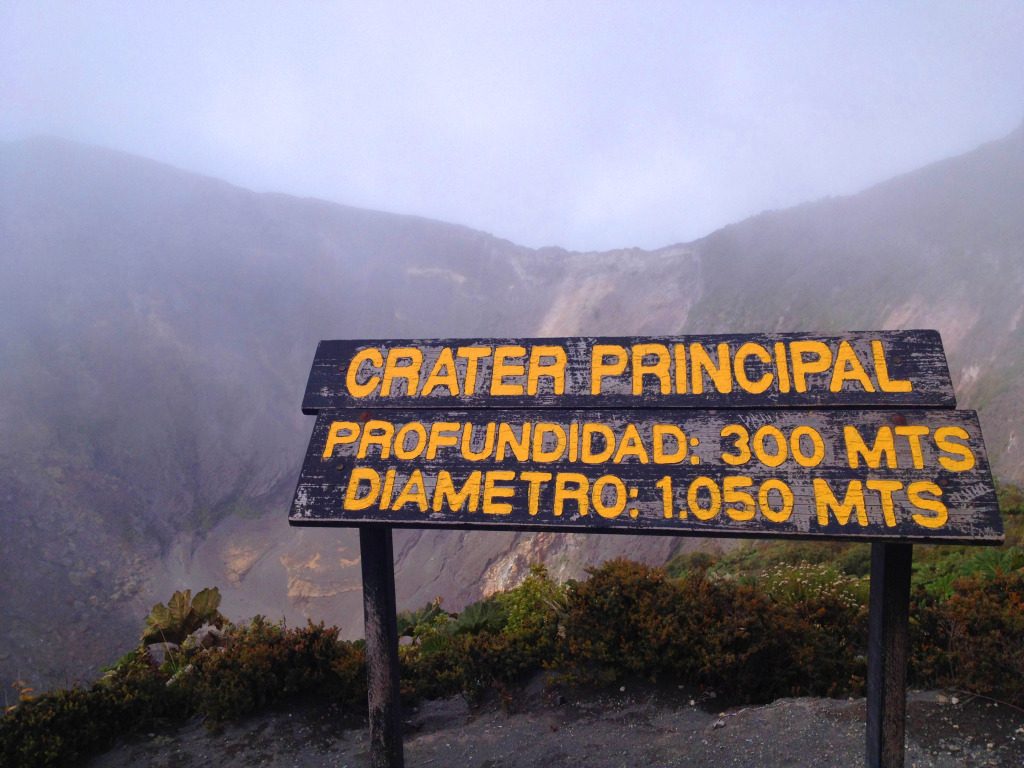
While on course with
Outward Bound Costa Rica, our students get to experience many of the diverse landscapes of Costa Rica, Panama and Nicaragua as they challenge themselves with adventurous journeys.
One of the unique landscapes our
Coast to Coast Expedition Semester and
Outdoor Leader Semester students visit is
Irazú Volcano, the highest active volcano in Costa Rica.
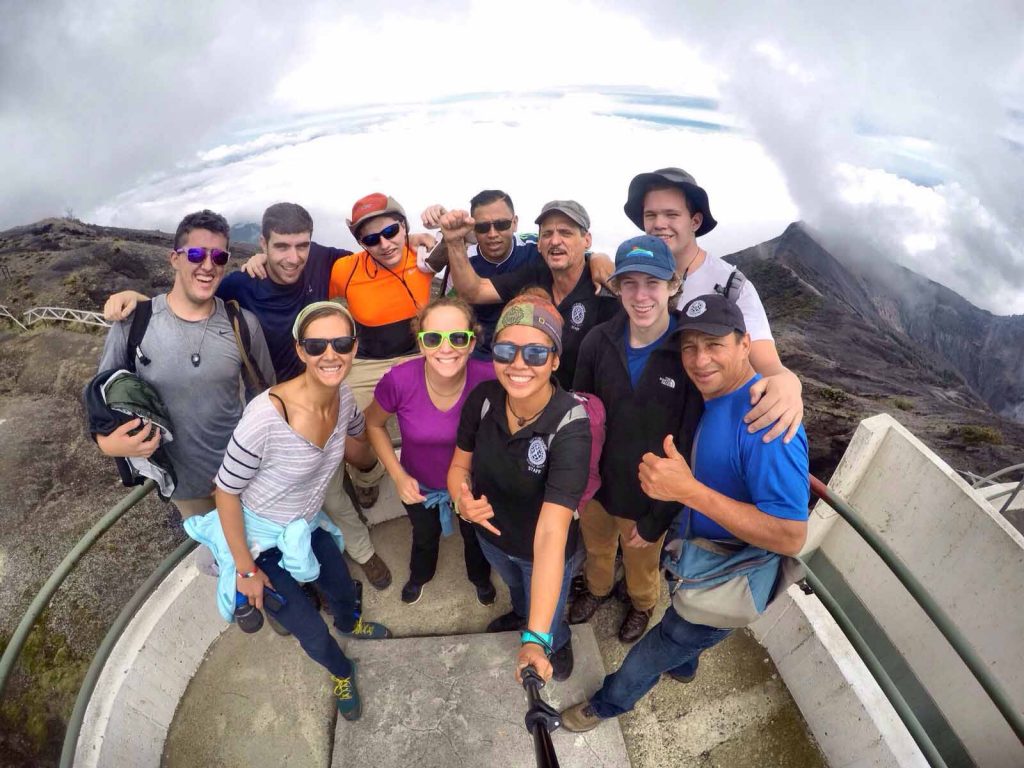
Costa Rica is known as being a land full of volcanoes. Situated in the Pacific Ring of Fire, the country is home to six active and 61 dormant volcanoes.
Irazú Volcano is located in the Central Valley near the city of Cartago, which was once the capital city. The volcano sits approximately an hour west of our
rainforest base in San Ramon de Tres Rios.
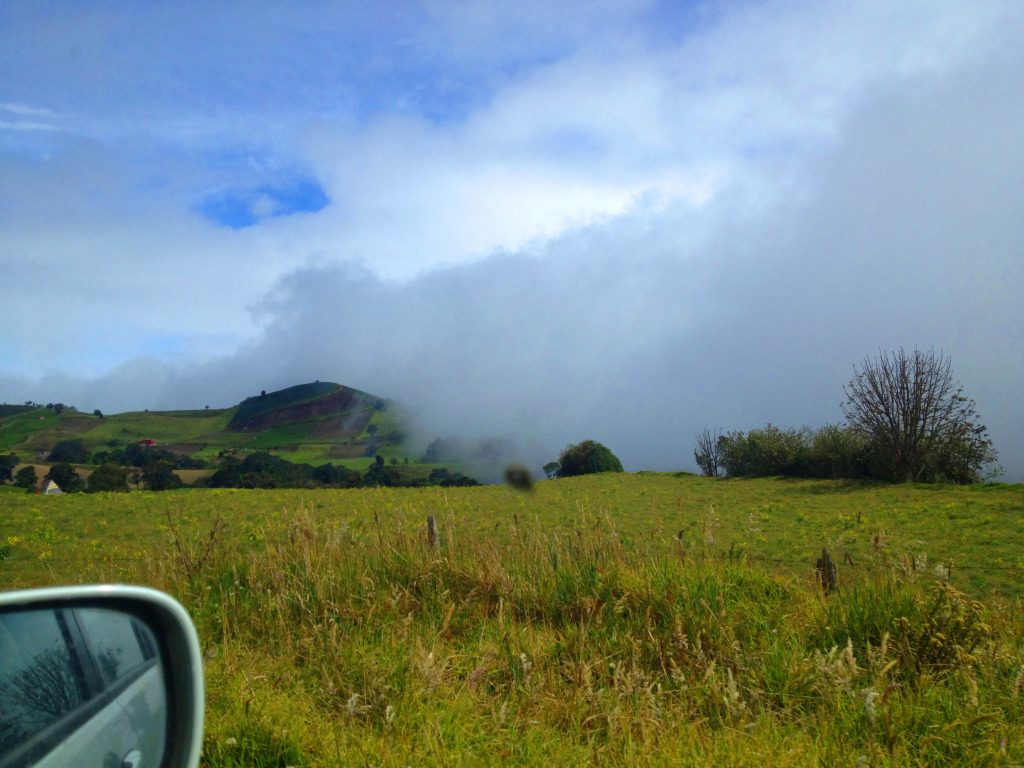 The road to the volcano
The road to the volcano climbs nearly 6,000 feet and winds past small pueblos, restaurants and coffee plantations. The land surrounding the volcano is good for farming, and many fincas grow potatoes, onions and cabbage. On weekends, the road to the volcano is a popular destination for families who hike, picnic, or enjoy a winding drive. The journey also passes through several micro-climates, and is often full of sunshine, rain, dense fog and thick mist.
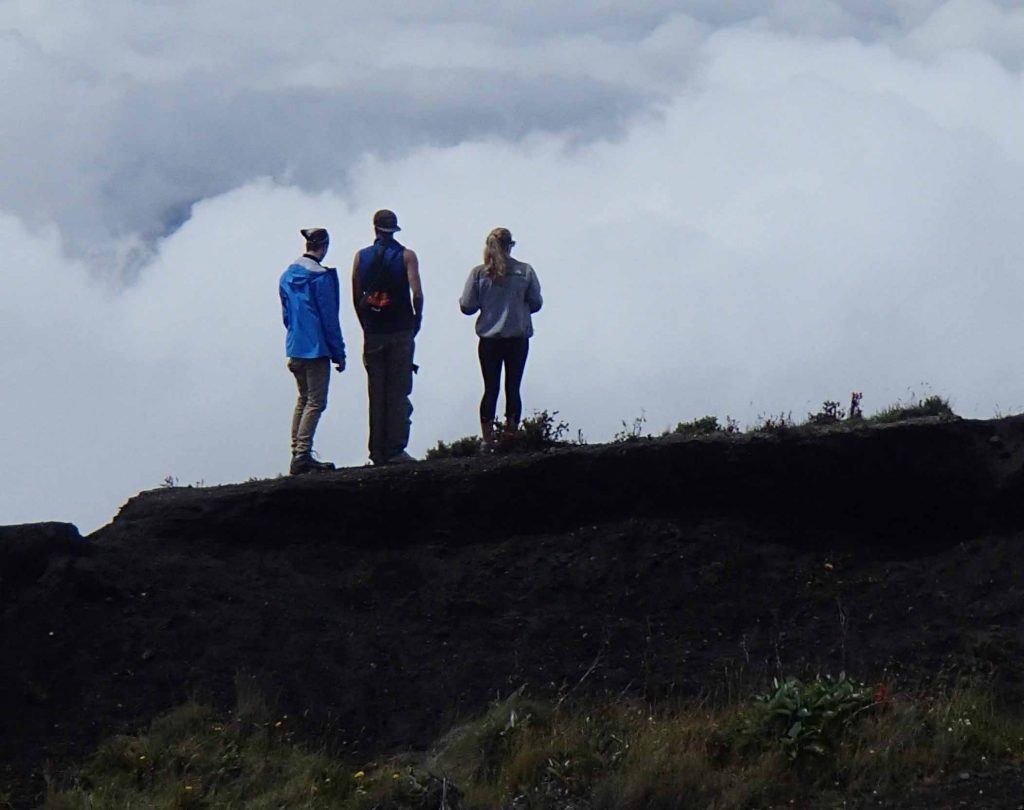
At 11,260 feet, Irazú Volcano National Park is home to one of the highest active volcanoes in all of Central America. Though it is an active volcano, it hasn’t erupted since 1994. It’s most famous eruption occurred in 1963 during United States President John F. Kennedy’s state visit to Costa Rica. The eruption was so profound that it showered the city of San Jose, roughly 30 miles away, in ash, and resulted in some last minute changes to the President’s itinerary.

From the park entrance, it’s a short hike to a panoramic viewpoint
Diego de la Haya. On the clearest of days one can see both the Atlantic and Pacific coasts that border the country from this viewpoint. However, at such a high altitude, most days the air is saturated with a thick cloud cover.
This viewpoint also overlooks a green crater lake that is the volcano’s most recognizable image. Unfortunately, in recent years the lake has been dry.
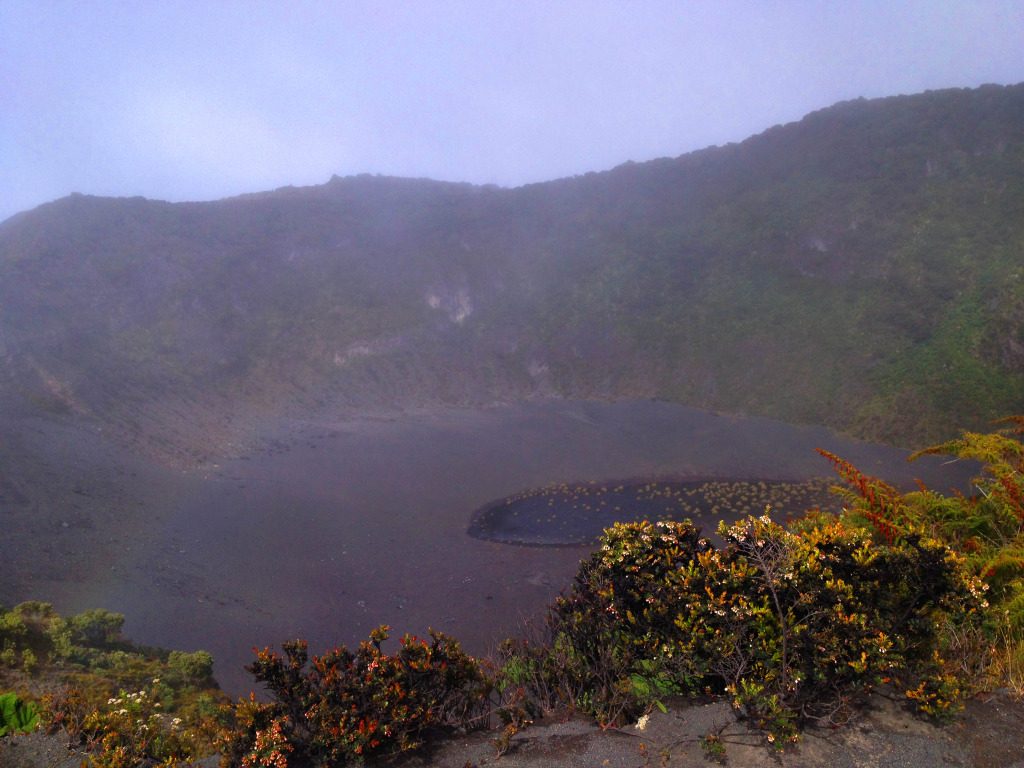
Our students also spend time on their visit to this National Park by hiking through
Playa Hermosa. No, this is not actually a beach, but rather a crater area that more resembles a dusty, moon landscape, or maybe J.R.R. Tolkien’s Middle Earth.
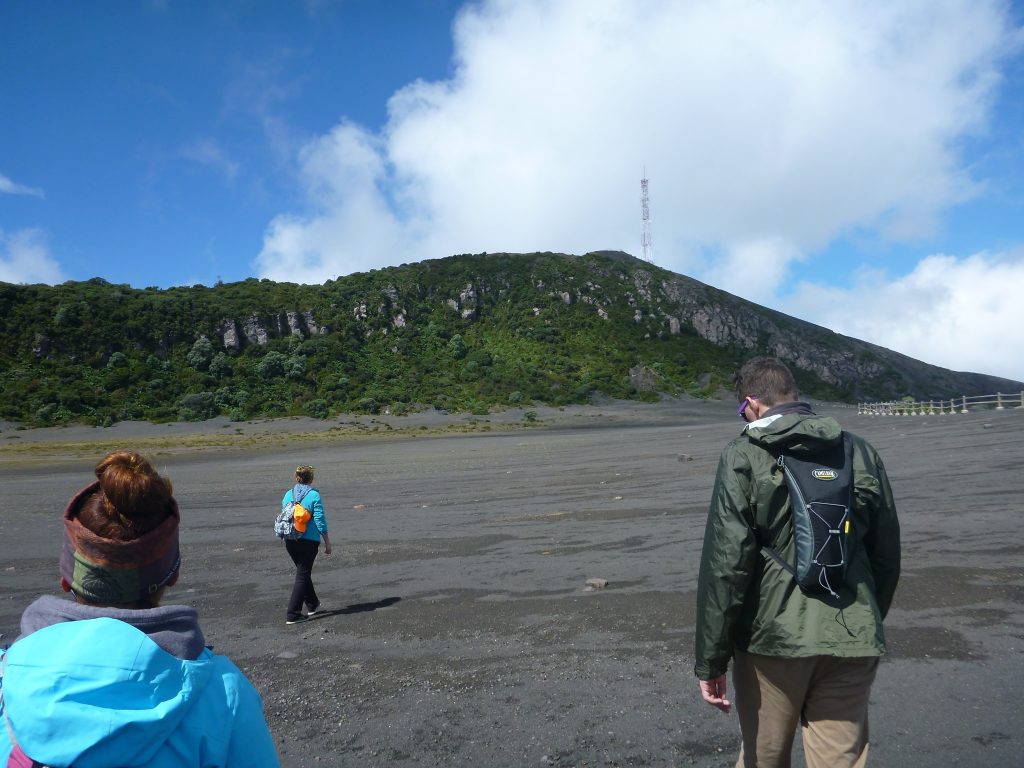
Irazú Volcano National Park is one of the coldest places in Costa Rica. The average temperature here is 7 degrees Celsius, or 45 degrees Fahrenheit.
Another highlight Irazú Volcano National Park offers for our students is wildlife viewing opportunities. The park is home to wildlife you can’t find anywhere else in the country including armadillos and a variety of bird species.
Interested in summiting Irazú Volcano with Outward Bound Costa Rica? Take a look at our
Gap Year & Semester programs.
 While on course with Outward Bound Costa Rica, our students get to experience many of the diverse landscapes of Costa Rica, Panama and Nicaragua as they challenge themselves with adventurous journeys.
One of the unique landscapes our Coast to Coast Expedition Semester and Outdoor Leader Semester students visit is Irazú Volcano, the highest active volcano in Costa Rica.
While on course with Outward Bound Costa Rica, our students get to experience many of the diverse landscapes of Costa Rica, Panama and Nicaragua as they challenge themselves with adventurous journeys.
One of the unique landscapes our Coast to Coast Expedition Semester and Outdoor Leader Semester students visit is Irazú Volcano, the highest active volcano in Costa Rica.
 Costa Rica is known as being a land full of volcanoes. Situated in the Pacific Ring of Fire, the country is home to six active and 61 dormant volcanoes.
Irazú Volcano is located in the Central Valley near the city of Cartago, which was once the capital city. The volcano sits approximately an hour west of our rainforest base in San Ramon de Tres Rios.
Costa Rica is known as being a land full of volcanoes. Situated in the Pacific Ring of Fire, the country is home to six active and 61 dormant volcanoes.
Irazú Volcano is located in the Central Valley near the city of Cartago, which was once the capital city. The volcano sits approximately an hour west of our rainforest base in San Ramon de Tres Rios.
 The road to the volcano climbs nearly 6,000 feet and winds past small pueblos, restaurants and coffee plantations. The land surrounding the volcano is good for farming, and many fincas grow potatoes, onions and cabbage. On weekends, the road to the volcano is a popular destination for families who hike, picnic, or enjoy a winding drive. The journey also passes through several micro-climates, and is often full of sunshine, rain, dense fog and thick mist.
The road to the volcano climbs nearly 6,000 feet and winds past small pueblos, restaurants and coffee plantations. The land surrounding the volcano is good for farming, and many fincas grow potatoes, onions and cabbage. On weekends, the road to the volcano is a popular destination for families who hike, picnic, or enjoy a winding drive. The journey also passes through several micro-climates, and is often full of sunshine, rain, dense fog and thick mist.
 At 11,260 feet, Irazú Volcano National Park is home to one of the highest active volcanoes in all of Central America. Though it is an active volcano, it hasn’t erupted since 1994. It’s most famous eruption occurred in 1963 during United States President John F. Kennedy’s state visit to Costa Rica. The eruption was so profound that it showered the city of San Jose, roughly 30 miles away, in ash, and resulted in some last minute changes to the President’s itinerary.
At 11,260 feet, Irazú Volcano National Park is home to one of the highest active volcanoes in all of Central America. Though it is an active volcano, it hasn’t erupted since 1994. It’s most famous eruption occurred in 1963 during United States President John F. Kennedy’s state visit to Costa Rica. The eruption was so profound that it showered the city of San Jose, roughly 30 miles away, in ash, and resulted in some last minute changes to the President’s itinerary.
 From the park entrance, it’s a short hike to a panoramic viewpoint Diego de la Haya. On the clearest of days one can see both the Atlantic and Pacific coasts that border the country from this viewpoint. However, at such a high altitude, most days the air is saturated with a thick cloud cover.
This viewpoint also overlooks a green crater lake that is the volcano’s most recognizable image. Unfortunately, in recent years the lake has been dry.
From the park entrance, it’s a short hike to a panoramic viewpoint Diego de la Haya. On the clearest of days one can see both the Atlantic and Pacific coasts that border the country from this viewpoint. However, at such a high altitude, most days the air is saturated with a thick cloud cover.
This viewpoint also overlooks a green crater lake that is the volcano’s most recognizable image. Unfortunately, in recent years the lake has been dry.
 Our students also spend time on their visit to this National Park by hiking through Playa Hermosa. No, this is not actually a beach, but rather a crater area that more resembles a dusty, moon landscape, or maybe J.R.R. Tolkien’s Middle Earth.
Our students also spend time on their visit to this National Park by hiking through Playa Hermosa. No, this is not actually a beach, but rather a crater area that more resembles a dusty, moon landscape, or maybe J.R.R. Tolkien’s Middle Earth.
 Irazú Volcano National Park is one of the coldest places in Costa Rica. The average temperature here is 7 degrees Celsius, or 45 degrees Fahrenheit.
Another highlight Irazú Volcano National Park offers for our students is wildlife viewing opportunities. The park is home to wildlife you can’t find anywhere else in the country including armadillos and a variety of bird species.
Interested in summiting Irazú Volcano with Outward Bound Costa Rica? Take a look at our Gap Year & Semester programs.
Irazú Volcano National Park is one of the coldest places in Costa Rica. The average temperature here is 7 degrees Celsius, or 45 degrees Fahrenheit.
Another highlight Irazú Volcano National Park offers for our students is wildlife viewing opportunities. The park is home to wildlife you can’t find anywhere else in the country including armadillos and a variety of bird species.
Interested in summiting Irazú Volcano with Outward Bound Costa Rica? Take a look at our Gap Year & Semester programs.